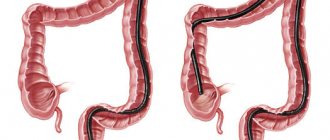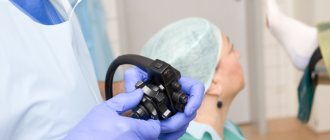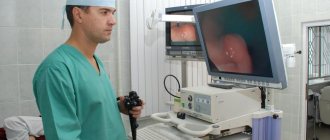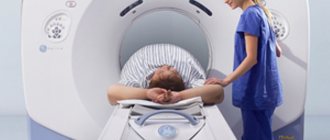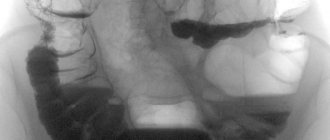To study the gastrointestinal system, a wide range of different diagnostic techniques are used today. Therefore, if there is a need for an examination of the intestines, patients are concerned with the question of which diagnostic method is more informative, what is better - irrigoscopy or colonoscopy?
Despite the fact that both diagnostic methods are aimed at examining the large intestine and identifying pathological changes and inflammatory processes in it, they are fundamentally different from each other:
- Colonoscopy is performed using special endoscopic equipment - a colonoscope, equipped with powerful optics that provides the clearest picture possible when examining tissues and parts of the intestine.
- Irrigoscopy is an X-ray examination method using a contrast agent that fills the large intestine immediately before the examination.
It is impossible to clearly determine which procedure is better. Each of them has its own advantages and disadvantages. The doctor chooses the research method based on the purpose of its conduct, the stage of the disease, the presence of indications and other factors. Both methods have significant differences, but do not exclude them in any way; on the contrary, they complement each other.
Features, advantages and disadvantages of colonoscopy
The colonoscopy technique is a visual examination of the intestinal lumen using an endoscopic apparatus (colonoscope).
To assess the condition of the mucous membrane of the gastrointestinal tract, a special probe is used, which has a built-in camera, an additional tube for pumping air, as well as miniature surgical instruments used to take a biopsy and remove polyps. The main advantage of this diagnostic method is the high degree of visualization of the intestinal lumen in real time. Thanks to colonoscopy, it is possible to identify focal inflammatory changes at an early stage, polyps, intestinal diverticula, erosive and ulcerative lesions, benign and malignant neoplasms. In modern medical diagnostic practice, there is no complete alternative to colonoscopy. In addition to a high level of information content, this technique allows you to remove small tumors and stop bleeding. Along with the advantages of the colonoscopic technique for examining the intestines, there is a list of disadvantages that are important to consider before choosing a diagnostic method.
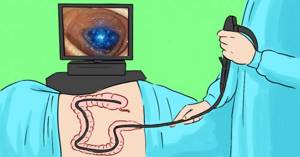
These disadvantages include:
- Severe discomfort and pain caused by the injection of air into the intestinal lumen and the advancement of the endoscopic tube along the entire length of the organ.
- High risk of traumatic damage to the intestinal walls due to insufficient qualifications of doctors or against the background of increased tone of the smooth muscles of the gastrointestinal tract.
- With a low threshold for pain sensitivity, patients may be advised to undergo anesthesia, which adversely affects the general condition of the human body.
- The impossibility of diagnosing using a colonoscope in young children and pregnant women.
Despite some shortcomings, colonoscopy remains a priority method for assessing the condition of the intestinal lumen.
Colonoscopy
Home» Diagnostics» Colonoscopy
Sign up for a colonoscopy in St. Petersburg
How to prepare for a colonoscopy

Man is a creature full of secrets, mysteries and oddities, which never ceases to amaze even after a quarter of a century, due to Aesculapian duty, you are forced to comprehend human psychology in practice. I will say more, even to understand oneself, this time is often not enough. In the wild west, it is customary to periodically give university teachers sabbaticals for a long period of time (rumor has it, up to a year), which I was always very jealous of, imagining how much you could read and write when the routine didn’t eat up your brain and all your free time. And now, for a month, together with the whole country and the world, I have been sitting on a forced vacation, it would seem, and cards in hand (written in April 2021, which we will remember for a long time).
The money hasn’t all been spent yet, there’s no need to be a hero yet (the planned surgical department of a small, highly specialized hospital, so they just closed us down, without repurposing it for coronavirus) - but I can’t really read or write. Depression, which is unusual for me in peaceful life, covers me with muddy waves, poisoning all impulses towards creativity.
I had a dream in my professional life - to have my own endoscopy department, staffed by people whom I completely trust, and where I can take my patient personally, holding his hand, and not sending him on a long and adventurous journey that he may not to go to the end, despite all my eloquence. The dream is also partly pathological, and the followers of Sigmund Freud can probably find work in this regard. But, on the other hand, it is no stranger than the dream of exchanging one iron bucket on wheels for another more expensive one, or buying a bunch of rags sewn by hardworking Chinese or Vietnamese hands, the value of which is determined only by the label from the recipients of more surplus value in our crazy world.
And finally, my dream has come true - our new QClinic department has opened with an endoscopy center, where patients can undergo gastroscopy and colonoscopy without leaving the clinic, of which I am the CEO. This event finally brought me out of a protracted depression (and given the troubled times, I hope it will not drive me into a new one), the first consequence of which is the text below about what I think and can say about colonoscopy.
What is colonoscopy (video colonoscopy)?
Colonoscopy is a method of endoscopic examination of the large intestine, during which the endoscopist visually examines the lumen of the organ using optics built into a special apparatus - a colonoscope, 1.5-1.7 m long. The length of the device also allows you to examine the final section of the small intestine, which important in diagnosing inflammatory diseases (for example, Crohn's disease), but, unfortunately, it is not always possible.
The colonoscope is also equipped with channels through which the intestine is washed with poor preparation, aspiration (more understandable - suction, but it’s too dissonant, so in medicine they try to avoid this word :)) fluid and carrying out instruments for taking a biopsy, removing pathological formations and stopping bleeding .
The device is inserted through the anus, and the position of the patient may vary, depending on the tasks and preferences of the doctor conducting the study - on the left side, on the back, on the back with the legs brought to the stomach.
What types of colonoscopes are there?
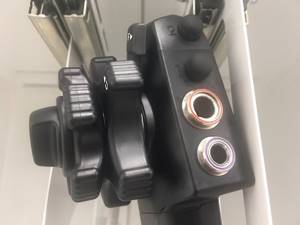
The outdated name of the technique is fibrocolonoscopy (FCS), since previously the main part of the device contained many fiber fibers conducting the image from the end of the device to the working part, wrapped in a hermetic protective shell, allowing for disinfection (TLD) of the device. Modern colonoscopes (video colonoscopes) work on a slightly different principle: at the end there is a high-resolution camera, which transmits an image through a cable wrapped in the same hermetic shell to a video processor, and through it to a medical monitor.
In our country, the renewal of medical equipment is happening quite slowly, so you can find both types of colonoscopes. Is there a significant difference? A philosophical and rhetorical question, especially considering that colonoscopes with fiberglass are no longer produced by reputable manufacturers. Therefore, this is quite old and worn-out equipment, the image quality of which is definitely lower, which can only be compensated by the experience of the doctor conducting the study.
The working part of both types of colonoscopes is equipped with valves that provide access and seal the working channels, and a control joystick that allows you to bend the end part of the device (photo on the right).
Is it possible to do without colonoscopy (video colonoscopy)?
Recommending a colonoscopy is undoubtedly the right thing to do and increases self-esteem. But, believe me, the desire to jump is visited not only by patients, but also by the doctors themselves. At 46, to be honest, I haven’t decided on this procedure yet. However, I have absolutely no alarming complaints and I took the ColonView test, which came back negative.
Question: if you have complaints of bleeding, mucus in your stool, problems with the consistency or regularity of your stool, abdominal pain, or have close relatives with colorectal cancer, is it possible to do without a colonoscopy? Here the answer is clear - no.
Question: if there are no complaints, and colonoscopy is indicated for you according to your age, in accordance with the country’s recommendations for cancer screening (you can read about them in a separate article)? The answer is yes, options are possible. The majority of questions from visitors to our site are centered around virtual colonoscopy and laboratory diagnostic methods.
There are many undoubted advantages of colonoscopy that are not available to other methods. Firstly, in terms of the reliability of the survey results, it has no competitors, and does not foresee any in the foreseeable future. There is no such thing as 100% reliability in medicine, and therefore you can safely discount 3-5 percent for medical errors and inattention, but this is still better than all other methods. This distinguishes it favorably, for example, from laboratory diagnostics. Secondly, if the preparation is not very good (and this is not an uncommon situation), it is possible to additionally wash the colon, re-examine it, etc., which distinguishes it favorably from a virtual colonoscopy. And finally, this is the only examination method that allows you to take a biopsy from identified pathological foci and remove small intestinal polyps.
More detailed information on this subject can be found on the “Colon Cancer Prevention” page.
Why are we afraid of colonoscopy?
The question of why people enthusiastically do ultrasound with or without reason, but run from endoscopists to the last minute, even when they understand that it is really necessary, is also, in general, rhetorical. But let’s try to sort out our fears and at least partially dispel them. So, a list of expectations that prevent colonoscopy from becoming a popular entertainment experience:
- difficult and long preparation for the procedure
- discomfort and even pain during colonoscopy
- doubts whether the device is processed well enough
- Complications may occur during a colonoscopy
- fear that something “bad” will be discovered during the research process (that’s how people are made, and not knowing is dangerous, and you don’t want to know)
Let's look at this list in more detail below.
Preparing for a colonoscopy
There is nothing special to please or encourage here - this is truly a rare disgusting thing. A few days before the colonoscopy, you will have to go on a special, waste-free diet, fast the day before and on the day of the examination, drink several liters of a laxative solution that is not very tasty, and then also sit on the potty. In general, the prospect is so-so.
There is only one optimistic note to add to this “requiem for a dream” - over the past decade, many preparations have been introduced to the market, and their taste and required volume improve and decrease every year. You can read more about preparation in a separate article.
If entertaining your family with brisk and regular runs to the toilet and back doesn’t seem like a good idea to you, training is possible in our clinic. Come to us in the morning, settle into a room with all the amenities, get ready, and in the afternoon we carry out the procedure. Our endoscopy center opened quite recently, so we are currently studying the demand and are not actively offering this service, but you can check with our administrators for information, I suspect that it will appear in the near future.
How is a colonoscopy performed?
In this section it is worth talking about the second point of colonoscopy phobias - the degree of unpleasantness of the procedure. Yes, it is definitely unpleasant, but the degree of discomfort directly depends on a number of factors:
- experience and skills of an endoscopist (primarily)
- equipment quality
- gas used to inflate the intestine (air, CO2)
- possibility of performing the procedure under anesthesia
The mucous membrane (inner lining) of the intestine does not have pain receptors, so it can be cauterized when removing polyps, bitten with biopsy forceps, applied with clips during bleeding, and all this will be absolutely painless for the patient. Therefore, I can answer the questions “is it painful to remove a polyp” and “is it painful to take a biopsy” - no (without deception), this will not add any additional unpleasant sensations to the very fact of performing a colonoscopy.
Why is the procedure itself uncomfortable? The large intestine is fixed by several ligaments and has the shape of the letter “P”. Unpleasant sensations are caused only by the very fact of implantation of a foreign object into the anus and the passage of the device through the corners, when the intestinal mesentery is stretched, which causes pain. You can read more about the anatomy of the intestine in a separate article, but here I would only like to note that both causes of discomfort are largely compensated by the factors listed above.
Let's probably start with the equipment (I really want to show off). Our endoscopy department is equipped with Pentax Defina EPK-3000 series equipment (the entire endoscopic stand is shown in the photo at the beginning of the article, the video processor is below left). I won’t prick my fingers and tell tales that this is the most sophisticated equipment in the world, there are cooler ones, but “cooler” is only needed for complex surgical procedures, which are approved to be performed exclusively in hospitals. Within the framework of outpatient endoscopy, this is very, very cool: honest, modern Japanese equipment with a smooth and convenient control unit, which allows both the doctor and the patient to comfortably pass through the bends of the colon described above. The photo on the right shows the thickness of our colonoscope; it is clearly visible that it is significantly smaller than the thickness of the average proctologist’s finger (my finger :), so inserting the device causes minimal discomfort.

I’m not sure that the administrators will have time to post information about our endoscopist doctors on the site by the time this article is published (everyone is as depressed about self-isolation as I am), but you can take my word for it: all the doctors with whom we cooperate , work in large hospitals and university clinics in the Northern capital, and are well known in our narrow circles. In experienced hands, a diagnostic colonoscopy takes only about 15 minutes and is quite manageable without anesthesia. Therefore, if you are more afraid of anesthesia than the procedure itself, take a risk, and most likely you will not regret it.
If your fears have the opposite sign - you are more afraid of colonoscopy than anesthesia, then we can offer you a study in medicated sleep mode: you talk in a cozy room with an anesthesiologist, then an intravenous injection, and wake up when everything is already done. I don’t know whether it’s worth going too far with boasting, but our anesthesiologists are also far from boys and they have a lot of experience.
Finally, during a colonoscopy, the colon is inflated with gas to better control its lumen. When using regular air, it takes a long time to be absorbed or comes out naturally for a long time, which causes additional discomfort. The latest fashion in this regard is to use CO2 instead of air, which is absorbed much faster. During the design and renovation of our endoscopy department, all preparatory work was carried out for the use of CO2. True, the pandemic, unfortunately, has once again made adjustments to our plans: there are certain difficulties in purchasing gas and some equipment, but we are working very actively on this, and we hope that we will solve all the problems soon.
How are colonoscopes disinfected?
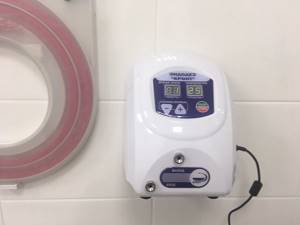
Considering that each of these high-tech devices costs just under 1 million rubles, there is absolutely no chance of making it disposable in the near future. Accordingly, the only question is the quality of the device’s processing, and here, again, we have something to brag about. The most modern standard for processing endoscopes involves complete automation of the process: after use, the channels of the device are washed and purged with a special apparatus, and then, after mechanical cleaning, the colonoscope is loaded into a washing machine called a reprocessor, where it undergoes pre-sterilization preparation and high-level disinfection, and then the channels are dried 70 % medical alcohol. Depending on the disinfectant solutions used, the treatment cycle takes from 20 to 40 minutes and takes place without human intervention. Another important point is the storage of devices after disinfection. The most modern standard is storage in special cabinets equipped with bactericidal lamps and a ventilation system that allows maintaining maximum sterility for up to 14 days.
Not all clinics go broke on all of the above, processing colonoscopes the old fashioned way, by hand. Above in the photo is our Endodez apparatus for washing and drying canals, below is our reprocessor and cabinets for storing endoscopes.
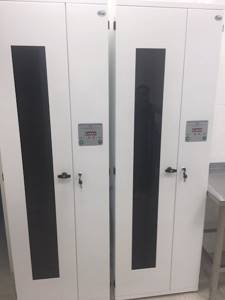
To this it is worth adding one last “zest” - for disinfection we use high-quality (and, unfortunately, very expensive) disinfectants.
Complications during colonoscopy
These, unfortunately, are also not entirely empty fears. When inflating the intestine and manipulating the endoscope, damage to the intestinal walls (perforation) is possible; in other words, there is a danger of making a hole in the intestine, which may require urgent surgical treatment. But this complication is very, very rare. According to medical statistics, with diagnostic colonoscopy - in 0.016-0.8% of cases, with removal of pathological formations - 0.02-8%. Such a wide spread can be explained very simply: the number of complications directly depends on the factors already mentioned above, first of all, the experience of the endoscopist, and secondly, the quality of the equipment.
About other fears
It is very difficult to comment on the fear that “God forbid, they find something”, but it definitely exists and is often a reason to delay medical diagnosis. Here I can only cite statistics that motivate you to overcome phobias. Although we launched our endoscopic service quite recently and managed to carry out only about 15 procedures in April (self-isolation, there’s no escape from it), two patients were found to have large polyps and one had early cancer of the rectosigmoid colon. Agree, it's impressive. Below are photographs of our studies: the upper two show normal intestinal anatomy, the lower ones show a polyp and a tumor.
In conclusion, I would like to add a small fly in the ointment to the honey of my self-praise. Good equipment is not cheap, good doctors do not work for free, and a modern system for disinfecting endoscopes, with a bunch of disposable brushes and brushes, barrels of the necessary disinfectants (which cost like good cognac), the huge areas required according to Sanitary Regulations for this entire economy - this is generally nightly Every investor's nightmare. When we calculated the economics of this process, we really wanted to make our work as accessible as possible for our patients. At the same time, when studying the medical services market in St. Petersburg, especially in our turbulent coronavirus times, we found many dumping offers that we tried to target. But either we don’t think well, or our competitors know some secret inaccessible to us: we didn’t manage to lower the cost of our medical services for endoscopy to the top promotional offers of Yandek-Direct, it’s easier not to work than to work at a disadvantage... I hope that we didn’t get too excited (the cost, in general, is average in the city) and this will not be an obstacle to visiting us.
Sincerely, Anatoly Ivanovich Nedozimovany, associate professor of the course of coloproctology at Pavlov State Medical University of St. Petersburg.
The essence, pros and cons of irrigoscopy
Unlike the colonoscopic technique for examining the intestines, irrigoscopy is a non-invasive diagnostic procedure. The essence of this method is the introduction of a radiopaque substance into the lumen of the large intestine using an enema, followed by taking a series of X-ray images. When using the irrigoscopy technique, medical specialists evaluate the shape of the intestine, its structure, the patency of each section, as well as the presence or absence of foreign tumors. When using irrigoscopy, it is possible to identify acquired or congenital anomalies and developmental defects of the colon.
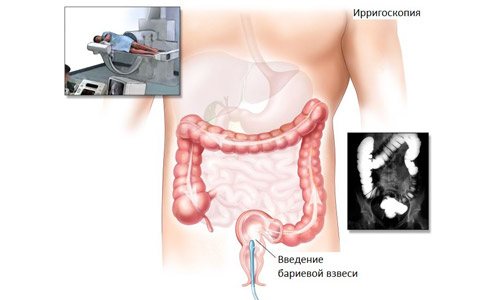
The main advantages of this technique include:
- Complete absence of discomfort and pain.
- Zero risk of traumatic damage to the intestinal mucosa.
- Possibility of use for examining children.
The disadvantages of irrigoscopy include:
- Impossibility of identifying local foci of the inflammatory process at an early stage.
- Impossibility of biopsy, polypectomy and bleeding control procedures.
- A categorical ban on use when examining pregnant women.
What is irrigoscopy?
This procedure is non-invasive because the examination is performed externally. The intestines are removed using x-rays. To get a good picture of the internal surface of the organ, a barium solution is administered as an enema. At the same time, contrast is provided through the vein, which reveals the vascular network. In combination with double staining, polyps and tumors are visualized, which not only protrude above the surface, but also have a pronounced blood supply. The picture shows structural features of the organ, which also sometimes lead to problems with intestinal function. Before irrigoscopy, after the administration of contrast, the organ is also pumped with carbon dioxide so that the folds do not interfere with finding the problem. During the study, several photographs are taken in different body positions. Inversions are needed to distribute the barium evenly, so the procedure lasts 30-40 minutes. An X-ray examination does not require anesthesia. Diagnosis is painless and is accompanied only by discomfort from a bloated intestine and an enema.

Indications for procedures
In order for a person to be prescribed one of the mentioned diagnostic procedures, he must have separate indications for the study. The main indications for performing irrigoscopy are:
- Prolonged constipation, accompanied by a change in stool consistency;
- Discharge from the rectal area of purulent, bloody or mucous contents;
- Chronic aching pain in the umbilical, left or right iliac region;
- Cramping pain in the rectal area, accompanied by a false urge to defecate.
In addition, the irrigoscopy procedure is prescribed for those patients who have contraindications for using a colonoscope.
Taking into account the high level of information content of the colonoscopy technique, there are the following indications for performing this diagnostic procedure:
- Routine examination of the intestines if there is a predisposition to gastrointestinal cancer.
- Suspicion of malignant and benign neoplasms, including colon polyps.
- Symptoms of inflammatory lesions of the colon.
- Chronic bowel disorders in the form of alternating constipation and diarrhea.
- Dynamic monitoring of treatment for intestinal diseases.
- Spontaneous decrease in hemoglobin levels in the blood.
- Discharge of bloody, mucous or purulent secretion from the rectum.
- In order to confirm erosive and ulcerative lesions of the intestinal mucosa.
- Sharp unfounded loss of body weight.
Differences in preparation for procedures
The preparatory stage before performing irrigoscopy includes a number of measures aimed at cleansing the intestinal lumen of remnants of digested food and mucus. For this purpose, the patient is prescribed a slag-free diet, which involves avoiding fatty and fried foods, fresh herbs, thermally unprocessed vegetables and fruits, as well as cereals. On the eve of irrigoscopy, patients are advised to avoid eating in the evening. In addition, eating is prohibited in the morning before visiting the diagnostic room. The final stage of bowel cleansing is an enema, which is performed in the evening before the test day and in the morning before going to the doctor. An effective alternative to an enema are pharmaceutical preparations that stimulate intestinal motility and effectively free the intestinal lumen from unnecessary fragments.

Since the colonoscopy technique involves a visual assessment of the condition of the intestine in real time, preparation for diagnostic manipulation has a number of distinctive features compared to preparation for irrigoscopy. A mandatory stage of preparation for colonoscopy is a slag-free diet, excluding not only fresh vegetables and fruits, but also dairy and fermented milk products, rye bread, all types of nuts, confectionery and white cabbage. Coffee, drinks with carbon dioxide and cocoa are also excluded from the diet.
24 hours before the colonoscopy, in the afternoon, you are allowed to consume only liquid or pureed foods. If the diagnosis does not involve the introduction of anesthesia, then drinking liquid is allowed no later than 3 hours before the examination. The day before the colonoscopy, the patient is prescribed the pharmaceutical drug Fortrans, which is available in powder form for preparing a ready-made solution. To completely cleanse the intestines before diagnosis, the patient needs to drink a total of 4 liters of a ready-made solution of Fortrans powder.
If for some reason a person cannot use this cleansing technique, then he is prescribed cleansing enemas. If the recommendations of the slag-free diet are violated, the doctor may cancel the preparation and prescribe it again.
How to properly prepare for a colon x-ray
The procedure is practically not carried out without special preparation: its results in this case simply will not be of value, since, firstly, feces will remain in the intestines, distorting the picture, and secondly, the contrast agent will not be able to be fully distributed throughout the organ.
Therefore, before the procedure, the patient should take care of cleansing the large intestine.
Preparation includes compliance with dietary restrictions, mechanical and medicinal cleansing measures. Two to three days before the scheduled date of the x-ray, you are prohibited from consuming:
- raw vegetables: beets, carrots, cabbage;
- millet, pearl barley and oatmeal;
- apples;
- apricots;
- black bread;
- peas and other legumes;
- alcohol and carbonated drinks;
- fried or grilled foods.
On the eve of the procedure, before going to bed, you should take a laxative prescribed by the doctor. Before this, a cleansing enema is recommended. Be sure to do an enema on the morning of the procedure.
Distinctive subtleties of the procedures
In addition to the peculiarities of preliminary preparation, there are technical differences when performing colonoscopy and irrigoscopy.
The total duration of irrigoscopy can vary from half an hour to 45 minutes. Before examining the patient, he is taken an X-ray in a horizontal position on his back. Next, the patient is placed on the left or right side, it is recommended to bend the lower limbs at the knees and cross the arms behind the back. After this, a solution of barium sulfate is injected into the rectum, which acts as a radiopaque substance. In some situations, contrast is administered orally. When taking barium sulfate orally, several hours should pass, which will ensure uniform distribution of the component throughout all parts of the intestine. The substance used is safe for the body, since it acts locally without being absorbed into the systemic bloodstream.
By analogy with irrigoscopy, during colonoscopy the patient is recommended to take a horizontal position on the left side, with the lower limbs bent at the knees and pressed against the body. Next, the medical specialist performs an antiseptic treatment of the patient’s anus, applies a lubricant and inserts an endoscopic tube, systematically moving it through the intestines. In order to improve the visualization of the organ, air is pumped into its lumen, which straightens the physiological folds. Thanks to the built-in camera, the intestinal lumen is visualized on a special monitor in real time. Unlike irrigoscopy, the total duration of this diagnostic procedure ranges from 10 minutes to half an hour.
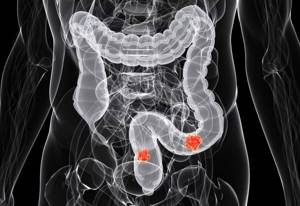
An increase in colonoscopy time occurs if the patient undergoes a biopsy or polypectomy. Unlike irrigoscopy, colonoscopy is invasive and presents symptoms such as discomfort and pain. Very often, patients are prescribed pain management techniques such as general anesthesia or drug-induced sleep (sedation). If a colonoscopy is performed using one of the anesthesia techniques, then its price increases markedly.
Possible risks and consequences of the procedure
Doctors consider irrigography to be a safe type of examination for humans. Provided that all preparation requirements are met, and the doctor has a sufficient level of qualifications, the patient usually does not have any problems after an X-ray of the colon with contrast. However, there are exceptions, for example, when perforation of the affected intestinal wall occurs due to the administered contrast, or when the contrast agent enters the abdominal cavity.
In some cases, after diagnosis, the patient feels weakness, drowsiness and dizziness. Such symptoms are not dangerous and pass quickly.
If, after the procedure, the patient systematically notices an increase in body temperature, intestinal disorders, blood coming out of the anus, nausea, vomiting and abdominal pain, he should definitely visit his doctor.
Examination of the large intestine using barium preparations and X-ray irradiation is a reliable way to identify diverticulosis, rectal cancer, dolichosigma, the presence of foreign bodies, and other pathologies, diseases, and functional disorders. In addition to the fact that, thanks to the results of irrigoscopy, the doctor can make a primary or confirm an existing diagnosis, the procedure also allows you to determine the presence of grounds for surgical intervention.
Comparison of contraindications
Before performing a comparative assessment of two methods of intestinal examination, it is recommended to familiarize yourself with the contraindications for each type of diagnosis. The irrigoscopy procedure cannot be performed if there are the following contraindications:
- The period of bearing a child.
- Routine medical examination if there is a predisposition to gastrointestinal cancer.
- In the presence of through lesions in the intestinal wall.
- Severe diseases of the cardiovascular system in the decompensation stage.
In addition, the irrigoscopy procedure is prescribed with caution to those patients who have previously had a local inflammatory process in the intestine.
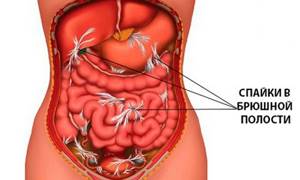
Since the colonoscopy procedure is an invasive diagnostic method, the list of contraindications to its implementation contains additional items:
- Severe pathologies of the respiratory and cardiovascular systems.
- Severe course of ulcerative colitis.
- Pathologies of the blood coagulation system.
- Gestation period and childhood.
- The presence of adhesions in the intestinal area.
- Acute intestinal obstruction.
- Obstruction (blocking) of the intestinal lumen by a benign or malignant tumor.
Which procedure is better
Despite the fact that colonoscopy and irrigoscopy procedures have similar contraindications and indications, the techniques differ in different levels of information content and research principles. The main advantage of colonoscopy is the high level of detail in the lumen of the large intestine, which makes it possible to detect even minimal changes in its structure. In addition, colonoscopy is an indispensable method for removing polyps, small tumors and taking biopsies. The irrigoscopic technique is not as informative, but when used there is no risk of pain, discomfort and damage to the mucous membrane. If the patient does not have direct indications for colonoscopy, then irrigoscopy can be used as an alternative.
Ilona Ganshina
Higher medical education. Federal State Budgetary Educational Institution of Higher Education Rostov State Medical University, Faculty of Treatment and Prevention. Practicing doctor at a medical diagnostic center.
What is better to choose as a diagnostic method?
If you have a choice: which is better, irrigoscopy or colonoscopy, first of all you should find out which method is more informative. These studies differ, both instrumentally and in the goals they pursue. The information content of both methods depends on the pathology. As a rule, diagnostics begin with colonoscopy and, if necessary, supplement it with irrigoscopy. This is done if the problem area of the intestine is localized in a place that is difficult to reach with an endoscope.
The choice of method for examining the colon rests entirely with the attending physician. Only he selects the most effective and safe method, taking into account all the characteristics of a particular patient: the general clinical picture and physical condition. The patient, in turn, decides whether to consent to the procedure or not.
